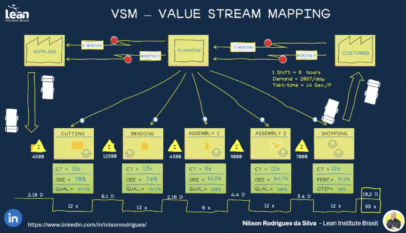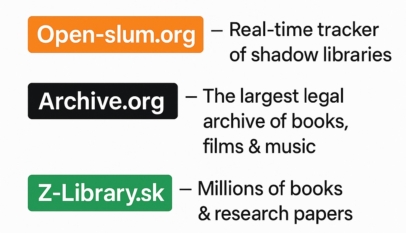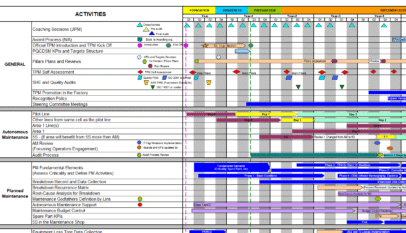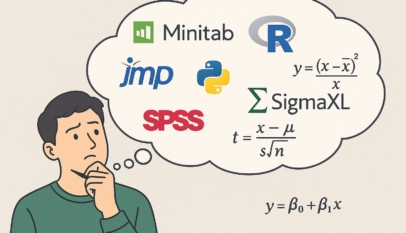Kaizen: How Small Steps Lead to Big Improvements
In the world of continuous improvement, Kaizen stands as a foundational concept. It’s not just a tool or a one-off event—Kaizen represents an ongoing philosophy where every process is continuously evaluated for improvements in time, quality, and resources.
But how do you translate this philosophy into action? One effective approach is the Kaizen Event, a focused effort aimed at driving immediate, impactful improvements in a specific area. Let’s walk through the essential steps of conducting a successful Kaizen Event, from preparation to implementation.
Step 1: Selecting the Right Focus
To ensure a successful Kaizen Event, it’s crucial to begin by selecting a well-defined, ongoing activity as the focus. Prioritize areas linked to revenue generation or operational bottlenecks—places where you know there’s room for improvement.
Choosing the right subject can make or break the effectiveness of the event. Concentrate on areas where small changes can lead to significant results. Often, these are tasks or processes that have gone overlooked in the day-to-day routine but have a big impact on the overall efficiency.
Step 2: Assembling a Cross-Functional Team
A successful Kaizen Event depends on the diversity of the team. You need a mix of talents, perspectives, and on-the-ground experience to uncover hidden inefficiencies and spark creative solutions. The team should include floor operators, local supervisors, and technical experts who are directly involved with the process.
By bringing together individuals from different roles, you ensure that all angles are covered. Their firsthand experience is key to identifying waste and suggesting practical solutions.
Step 3: Management Commitment is Essential
For a Kaizen Event to achieve lasting results, management’s visible support is vital. Management needs to attend the kickoff meeting, offer guidance, and be willing to invest resources. By showing up and being engaged, they set the tone for the importance of the event and signal to the team that their efforts matter.
Commitment from leadership also helps when more significant changes require approval. Involving management early ensures a smoother path to implementing ideas that need time or investment.
Step 4: Presenting a Roadmap for Success
A clear, structured roadmap is a critical part of guiding the team through the Kaizen process. It provides clarity on the timeline, activities, and expected outcomes. Having this direction in place ensures that everyone is aligned, and the event moves forward with a purpose.
Step 5: Team Training and Idea Generation
Training the team on essential Lean Manufacturing concepts like the 7 Wastes and continuous improvement techniques is necessary. It equips everyone with the knowledge they need to identify inefficiencies and come up with meaningful ideas.
Allow the team some time for reflection and idea generation—this is where creativity can shine, and practical solutions emerge.
Step 6: Perform a Present State Analysis
Before diving into solutions, it’s important to evaluate the current state of the process. This involves analyzing layouts, process charts, and takt times. The team should create a Value Stream Map to visualize inefficiencies and bottlenecks clearly.
By understanding the present state, the team can better identify waste and target areas for improvement.
Step 7: Generate Proposals for Improvement
After analyzing the current state, it’s time to create proposals for the next steps. These ideas should be detailed, and the team must evaluate which solutions are most feasible and impactful. From there, a proposal list should be created and action items noted.
Step 8: Present Action Plans to Management
Once the proposals are ready, it’s time for the team to present their action plans to management. Management might reject some ideas, but only for logical reasons, which should be clearly communicated back to the team. Focusing on “low-hanging fruit” can help ensure early wins and build momentum.
Step 9: Implement Changes Immediately
Changes should be implemented swiftly, especially those that can be tackled with minimal resources. According to the Pareto Principle (also known as the 80-20 Rule), a small percentage of causes often lead to the majority of results. Focusing on these “vital few” items will yield the most impact in the shortest amount of time.
Step 10: Track Progress Visually
Visual management tools such as Gantt charts and performance boards are essential for tracking the progress of the Kaizen Event. The team should regularly review the before-and-after metrics, ensuring that improvements are transparent and measurable.
Step 11: Measure Results and Share Findings
The final step is to measure the improvements made and share the findings with the team and management. Gains should be visually displayed, and the process of continuous improvement should be emphasized. Transparency ensures everyone is aligned on the success of the event.
Step 12: Appreciate the Team’s Effort
Lastly, management should take the time to thank the team for their hard work—without overhyping or downplaying their efforts. Genuine appreciation goes a long way toward building a culture of continuous improvement.














